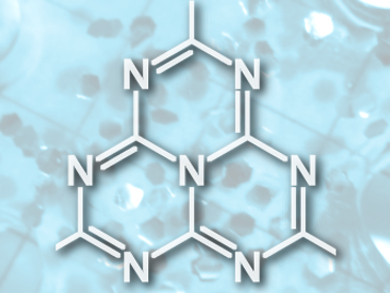Hydrogels are useful materials due to their low weight, elasticity, and biocompatibilty. High water contents can compromise the mechanical stability of the hydrogel; reinforcement methods have been developed to address this problem. Nanofibers and nanosheets, for example, can improve the mechanical properties of hydrogels, but often change the material’s swelling properties significantly. The sheetlike graphitic carbon nitride (g-CN) is one promising candidate as a reinforcer for hydrogels due to its low specific weight, cost-effectiveness, and adjustable properties.
Bernhard V. K. J. Schmidt, Max-Planck-Institute of Colloids and Interfaces, Potsdam, Germany, and colleagues have used g-CN as both photoinitiator and reinforcing material in hydrogel synthesis. In a one-step procedure, the team combined water and g-CN with N,N-dimethylacrylamide (DMA) and N,N‘-methylenebis(acrylamide) (MBA) and irradiated the mixture with visible light to induce gelation.
The formed hydrogel shows significantly improved mechanical strength compared with analogous hydrogels prepared with common radical initiators. The swelling factor of the material is reduced from 2 for the non-reinforced hydrogel to 1.2−1.7 for the g-CN-derived material. The team attributes the improved mechanical properties to the covalent incorporation of g-CN into the gel’s network, which allows for an improved distribution of mechnical stress throughout the material. g-CN that is physically dispersed in the hydrogel does not have the same strengthening effect. According to the researchers, g-CN-based hydrogels with tunable mechanical properties could be promising for a number of advanced hydrogel applications.
- Reinforced Hydrogels via Carbon Nitride Initiated Polymerization,
Baris Kumru, Menny Shalom, Markus Antonietti, Bernhard V. K. J. Schmidt,
Macromolecules 2017.
DOI: 10.1021/acs.macromol.6b02691



